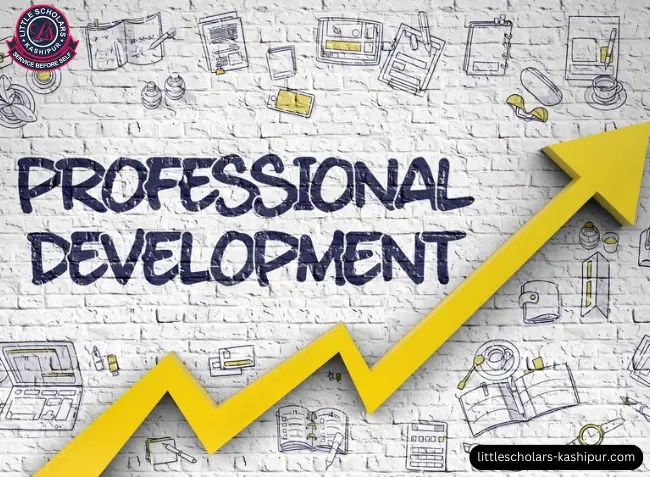In the ever-evolving landscape of education, professional development is more than just a buzzword—it's a necessity. Teachers, administrators, and educational staff are continually seeking ways to improve their skills, adapt to new teaching methods, and ultimately enhance student outcomes. But what exactly does professional development entail, and why is it so crucial?
The Definition of Professional Development
What is Professional Development?
Professional development refers to the ongoing process of acquiring new knowledge and skills related to one's profession. In the context of education, it encompasses a wide range of activities aimed at improving teaching effectiveness and student learning outcomes.
Types of Professional Development
Professional development can take many forms, including formal courses, workshops, seminars, and informal learning experiences. It can be delivered in-person or online, individually or in groups, and can focus on various aspects of teaching and learning.
The Importance of Professional Development
Enhancing Teacher Skills
One of the primary goals of professional development is to enhance the skills of educators. This includes improving subject matter knowledge, teaching strategies, classroom management techniques, and the ability to use technology effectively.
Impact on Student Achievement
Studies have shown that effective professional development leads to improved student achievement. When teachers are better equipped with the latest teaching methods and knowledge, students benefit from a higher quality of education.
Adapting to Educational Changes
The field of education is constantly changing, with new research, technologies, and policies emerging regularly. Professional development helps educators stay current and adapt to these changes, ensuring that their teaching practices remain relevant and effective.
The Importance of Classroom Environment for Student Learning: Read more
Types of Professional Development Programs
Workshops and Seminars
Workshops and seminars are traditional forms of professional development. They provide opportunities for educators to learn about new concepts and strategies in a collaborative setting.
Online Courses and Webinars
The advent of technology has made online courses and webinars popular options for professional development. These formats offer flexibility, allowing educators to learn at their own pace and convenience.
Peer Collaboration and Learning Communities
Learning communities and peer collaboration initiatives encourage educators to share knowledge and experiences. This form of professional development fosters a supportive network and promotes continuous learning.
Mentorship and Coaching
Mentorship and coaching involve experienced educators guiding and supporting their less experienced colleagues. This personalized form of professional development can be highly effective in addressing specific needs and challenges.
Effective Professional Development Strategies
Ongoing and Sustained Learning
Professional development ought to be a continuous activity as opposed to a one-time occurrence. Sustained learning opportunities help educators continuously improve their skills over time.
Job-Embedded Professional Development
Job-embedded professional development integrates learning into the daily activities of educators. This approach ensures that professional development is relevant and immediately applicable to their work.
Personalized Learning Plans
Personalized learning plans tailor professional development to the individual needs and goals of educators. This strategy recognizes that each teacher has unique strengths and areas for improvement.
Challenges in Professional Development
Time Constraints
One of the biggest challenges in professional development is finding the time to engage in learning activities. Educators often have busy schedules, making it difficult to attend workshops or complete courses.
Financial Limitations
Budget constraints can limit the availability and quality of professional development opportunities. Schools and districts must find cost-effective ways to provide meaningful learning experiences.
Resistance to Change
Some educators may be resistant to new methods and ideas. Overcoming this resistance requires creating a culture that values and supports continuous improvement.
The Role of Technology in Professional Development
Online Platforms and Resources
Technology offers a wealth of online platforms and resources for professional development. Websites, online courses, and virtual conferences provide access to a wide range of learning materials.
Virtual Reality and Simulation
Emerging technologies like virtual reality (VR) and simulation offer innovative ways for educators to practice and develop new skills in a risk-free environment.
Social Media and Professional Learning Networks
Social media and professional learning networks allow educators to connect, share ideas, and learn from one another. Platforms like Twitter and LinkedIn have become valuable tools for professional growth.
Evaluating Professional Development Programs
Setting Measurable Goals
Effective professional development programs start with clear, measurable goals. These goals provide a framework for evaluating the success of the program.
Collecting and Analyzing Data
Data collection and analysis are crucial for assessing the impact of professional development. Surveys, observations, and student performance data can provide insights into what works and what doesn't.
Continuous Improvement Processes
Professional development should include a continuous improvement process. Regularly reviewing and refining the program ensures that it remains effective and aligned with the needs of educators and students.
Master Blended Learning: Your Path to Success Begins Here!: Read more
Case Studies of Successful Professional Development
Example 1: District-Wide Initiatives
A district-wide professional development initiative might include comprehensive training programs for all teachers, focusing on new curriculum standards and instructional strategies.
Example 2: School-Based Programs
School-based professional development programs can be tailored to the specific needs of the school. For example, a school might implement a program focused on improving literacy instruction.
Example 3: Individual Teacher Growth
Professional development at the individual level might involve personalized coaching and mentoring, helping teachers set and achieve personal growth goals.
The Future of Professional Development in Education
Emerging Trends and Innovations
Emerging technologies and trends will probably influence the direction of professional development in the education sector. This includes the increasing use of technology, personalized learning approaches, and data-driven decision-making.
The Role of Policy and Administration
Policy and administration play a crucial role in supporting and promoting professional development. Effective policies and administrative support create an environment where professional growth is prioritized and valued.
Conclusion
Professional development is a cornerstone of effective education. By continuously enhancing their skills and knowledge, educators can improve their teaching practices and positively impact student outcomes. As the educational landscape continues to evolve, ongoing professional development will remain essential for adapting to new challenges and opportunities.




